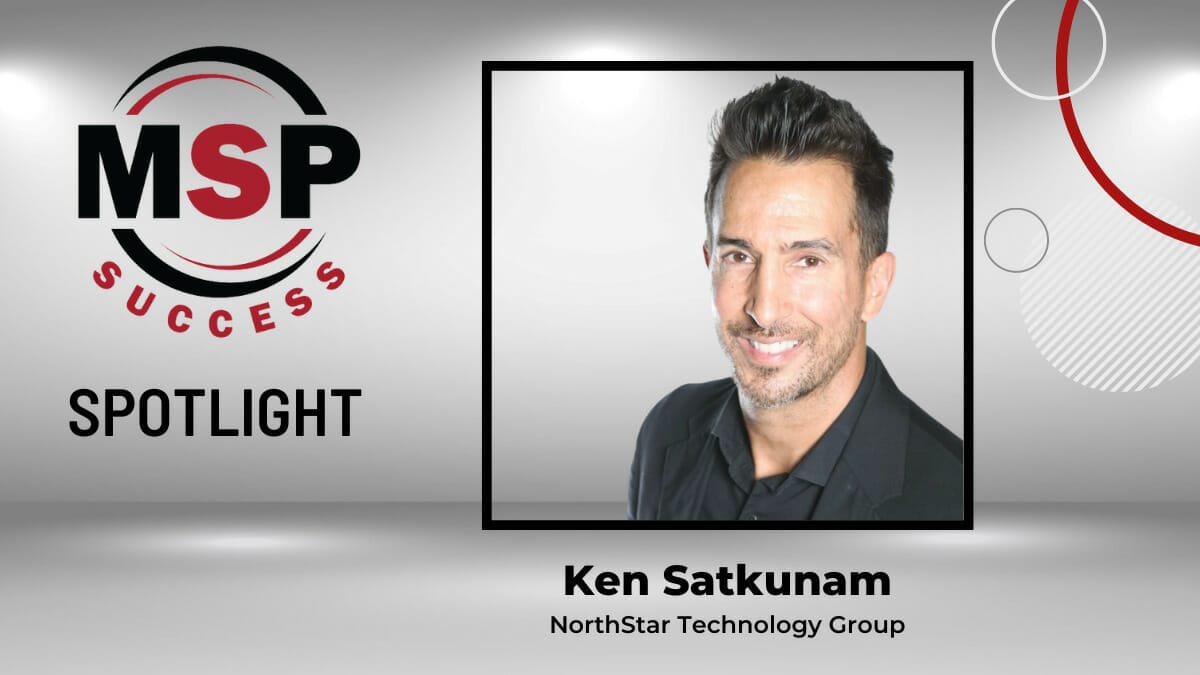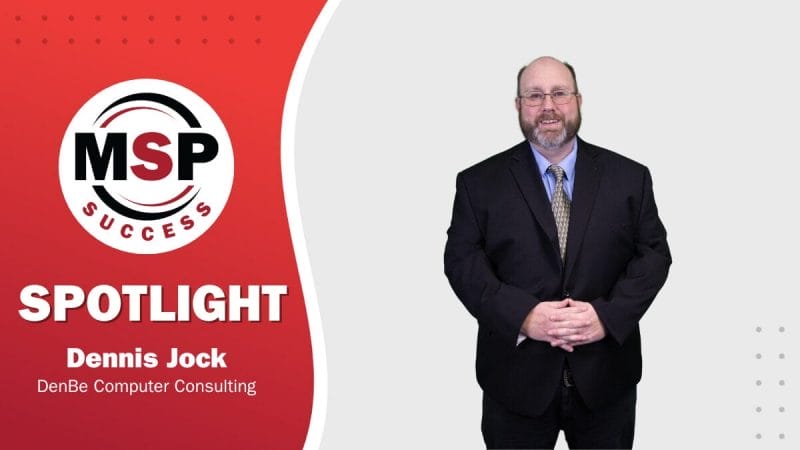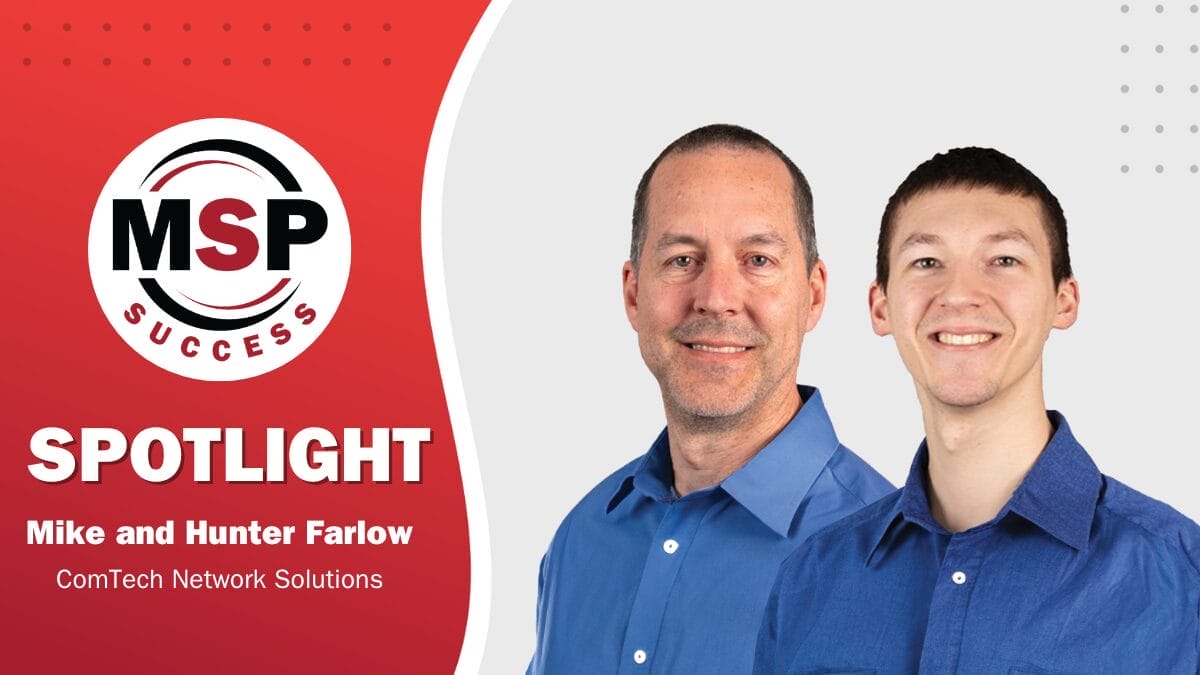Company: North Star Technology Group
Founded: 2000
Headquartered: Fargo, North Dakota
Geographic Market: North Dakota, Minnesota and South Dakota
Top Growth Indicator: Monthly Recurring Revenue (MRR)
YoY% Of Growth: Close to 60%
Founder & CEO: Ken Satkunam
What are the top three business indicators you use to measure your company and why?
We have three general areas where metrics are important: financial service delivery, the operational side, and sales and marketing. Cash flow is super important. We want to make sure we manage our cash well, and that’s the ultimate result of strong gross margins and healthy net income based on how you deliver services. With service delivery, it’s the kill rates. We want to make sure we’re continuing to resolve more issues than are coming in. For projects, it’s successful completion and keeping them under a certain number of days. Ultimately, it’s customer satisfaction (CSAT) and taking accountability seriously. We track CSAT using a tool called Customer Thermometer. It integrates into our PSA and those CSAT comments publish in real time on our website. Finally, sales and marketing, first-time appointments, pipeline dollars and close percentages for deals.
What is the top lesson you had to learn that allowed you to kick-start your business growth?
A mindset shift that came from recognizing that we are providing something extremely important to our customers and prospects. Previously, we struggled to articulate our position as a managed services provider. Our positioning was to provide services to organizations that lack the time, talent and interest to do it themselves.
Often, conversations were just around performance – availability, basic business continuity, disaster recovery and tech support. There’s always a security element to that, but we didn’t articulate that well enough. Our customers viewed technology and IT as a necessary evil, clearly a cost center. Even getting an increase for our talent expenses and tool cost increases during renewals was challenging. We’d pull teeth just to get a 2% or 3% increase.
So, when Covid happened, there was a lot of uncertainty. “Is this a good thing or a catastrophic thing in our industry?” It turned out to be a very good thing. We finally had a realization as a country that technology is critical work and that we were providing an essential service to our customers. We started to see an explosion in the threat landscape, like breaches and security incidents. Things changed when we reframed our conversation around real risk and made this a critical piece of operational strategy. Risk became such a real thing with real, quantitative impacts.

We provided a cyber security risk assessment for a prospect that was chuck-full of risk. They were compliance-regulated and didn’t have the money to make changes. Less than two weeks later, they had a cyber security breach. Ransom was detonated across the entire organization, and we were called upon to do the recovery efforts, which we did successfully. They ended up deciding, “Now I understand and will invest in this.” It’s events like that where you build this mindset because you never want to see anybody else go through that.
We have experience where we’ve seen this is a real danger to organizations. It’s not just a moneymaking narrative as a sales approach. It’s a legitimate risk and a real financial and reputational impact on these organizations. When you start to believe that yourself, that makes the messaging so much more energetic and much more impactful. I can’t tell you how much of a shift that’s made in me. It’s also developed a purpose behind what we do for the rest of our organization.
What is your single secret to success this past year?
Cash flow. Last year, we did our first small MSP acquisition, and we just completed our second one. We still focus on growing organically, but having cash flow allowed us to entertain merger and acquisition opportunities that accelerated growth.
What would you say is the biggest challenge you had to overcome this past year related to reaching that growth?
Labor – the human side has been the most challenging for us. We reframed and retooled our stack where it didn’t have a large labor impact, but still some. As you grow, making sure you have enough people to deliver these things is tough, even with the acquisitions. We’re focusing on small, more distressed MSPs that want to take some chips off the table. But when we do that, it creates a huge amount of work to do the risk-frame conversations, to onboard the new tool stacks and to integrate them with support.
Who is a partner or what is a tool that helped you along the way?
We are a very large Kaseya shop. We pretty much use almost their entire stack. We were a Datto shop before the acquisition. We were a Network Detective shop before they bought them. We were a RocketCyber shop before Kaseya acquired them. For whatever reason, the tools we’ve aligned ourselves with they acquired, and that’s been great for us because that puts everything under one arm.
If I was going to pick one tool, it would be RocketCyber. It does its job. We had a large company that builds electric motors. They are CMMC compliant. They’ve got parts on the Mars Rover. They work with Formula 1 and Red Bull. RocketCyber detected a security incident where somebody exploited some vulnerability on a server and was using a PowerShell script to automatically delete the security logs. RocketCyber detected that, and it went to their security operations center. Their SOC contacted us. We implemented an instant response and were able to resolve it before it had a huge impact. It saved our bacon.
What book would you recommend other MSPs or SMBs read when trying to grow their business?
Think And Grow Rich – it’s all about mindset and developing the 13 principles they describe. It’s decades old, nothing revolutionary, but it stands the test of time.
What words of wisdom would you give to other MSPs that are looking to grow their business or build a successful exit?
- Know your numbers. Metrics are so important because that’s where you can identify either opportunities or problems sooner rather than later. The process alone of gathering your numbers is one of the best exercises any MSP could do.
- Fix your head and make sure you believe what you are doing is important. Don’t undercut yourself. Don’t commoditize. You need healthy margins to create a standard of care that your customers deserve.
- Find mentors and peer groups. Work with organizations that are dealing with the same or similar problems that you have.
For more information on North Star Technology Group, visit https://northstartechnologygroup.com/









